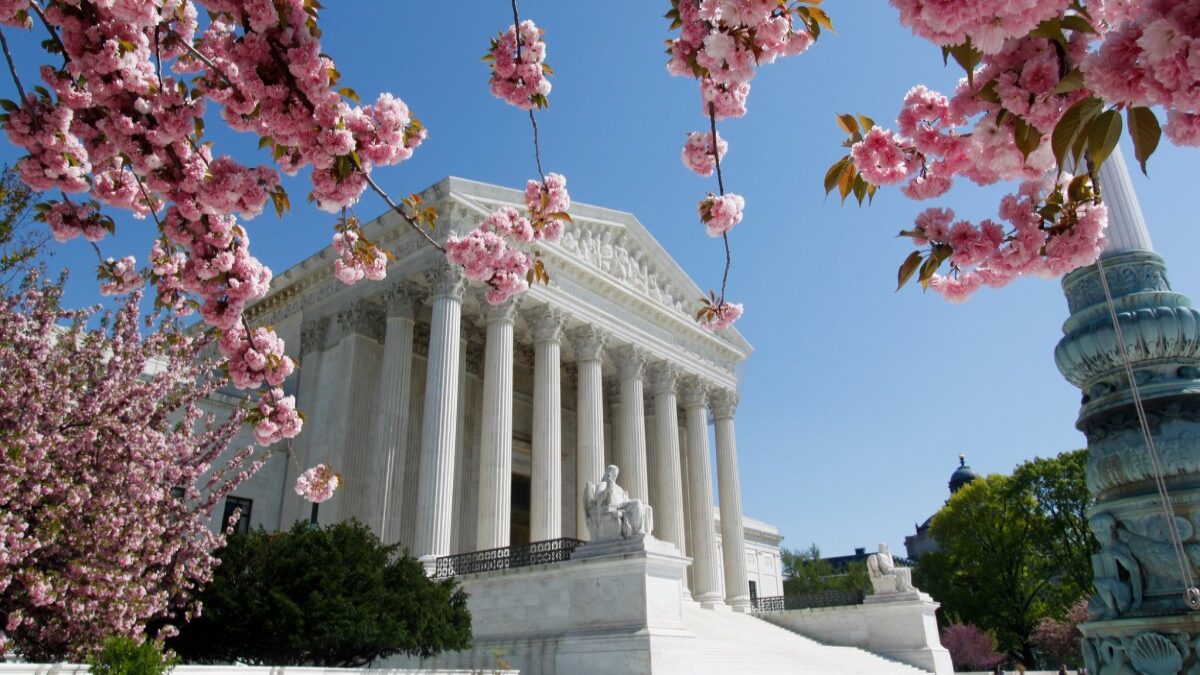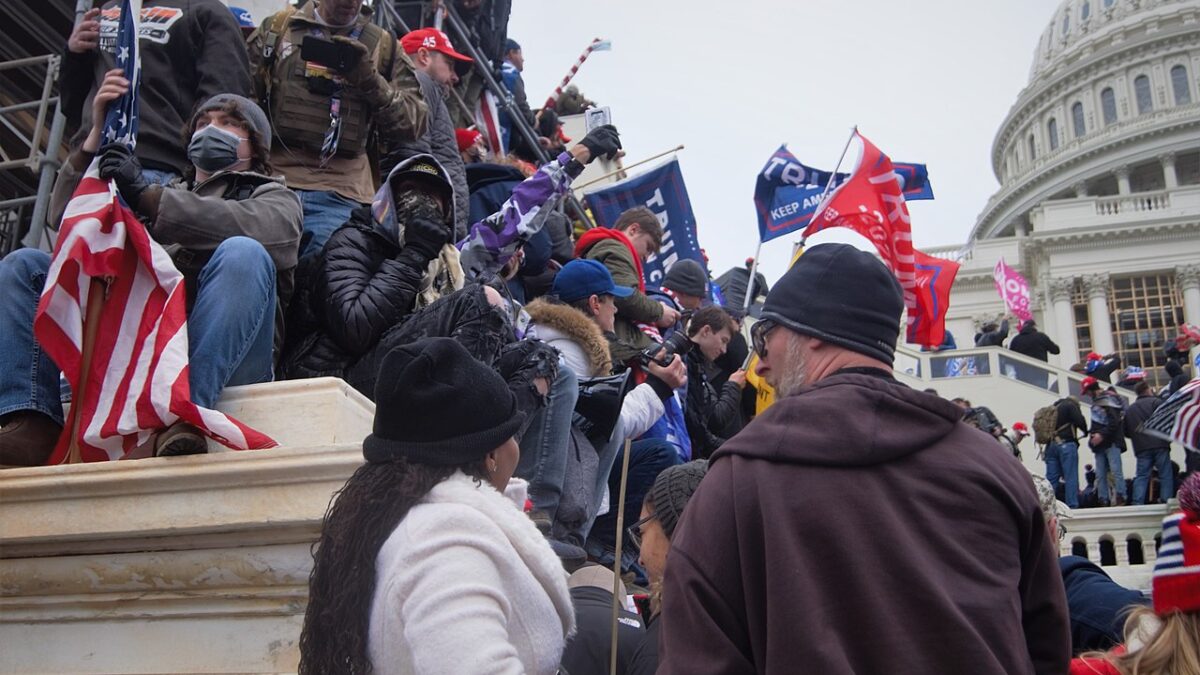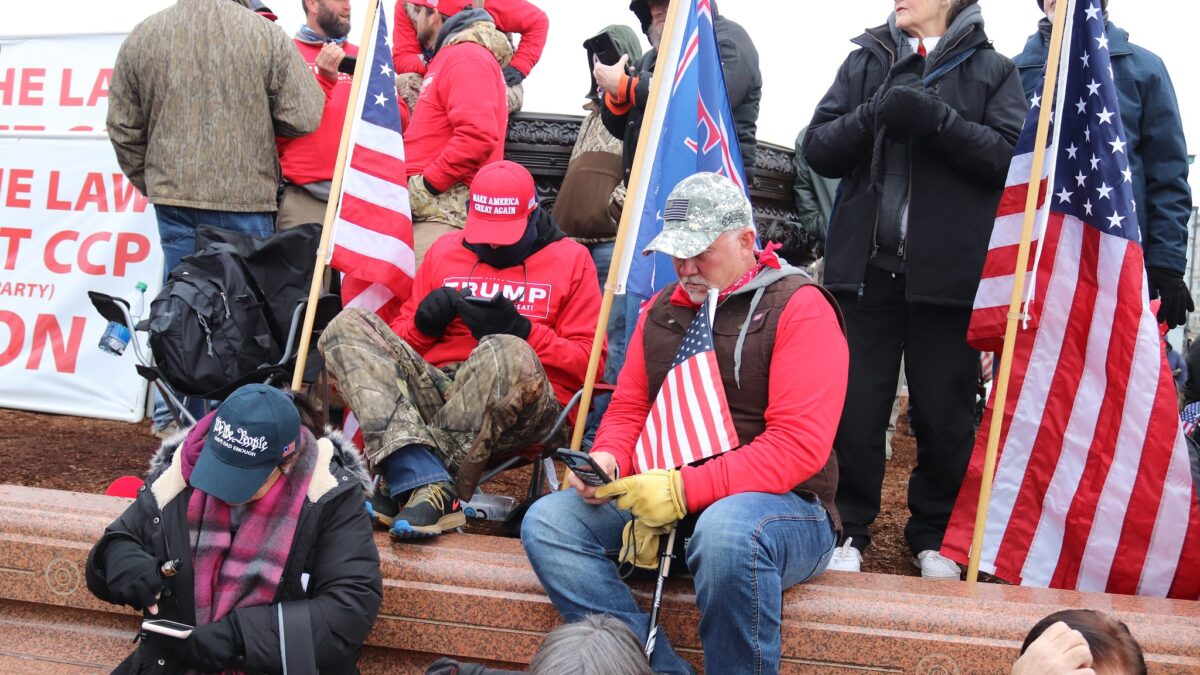Since Dobbs’ release last Friday, coverage has focused overwhelmingly on the bottom-line holding—that there is no constitutional right to abortion—and what that means for the country. But Dobbs is much more than its holding: The Supreme Court’s opinion destroyed the legal sophistry of Roe v. Wade and Planned Parenthood v. Casey and the anti-science underpinnings of their false claim that a constitutional right to abortion exists.
With the authority to regulate abortion returned to the people and their elected representatives, pro-life Americans seeking to persuade the public to prohibit or limit abortion would be well-served to study the Dobbs analysis.
No, Abortion Is Not in the Constitution
In its decision last week overturning Roe and Casey, the Supreme Court in Dobbs v. Jackson Women’s Health Organization began its analysis “by considering the critical question whether the Constitution, properly understood, confers a right to obtain an abortion.” To answer this question, the Supreme Court methodically examined “whether the right to obtain an abortion is rooted in the Nation’s history and tradition and whether it is an essential component of ordered liberty.” That analysis led the court to conclude there was no basis to find a constitutional right to abortion in the U.S. Constitution.
The high court’s analysis did not end there. The Dobbs opinion addressed next whether the doctrine of stare decisis counseled toward the continued acceptance of the precedent of Roe and Casey, notwithstanding the Supreme Court’s conclusion that, properly understood, the Constitution did not provide a right to abortion. After stressing that it has “long recognized that stare decisis is “not an inexorable command,” the Supreme Court analyzed five factors that compelled the court to overrule Roe and Casey.
The first two factors discussed by the Dobbs court considered the soundness of the Roe and Casey decisions and specifically “the nature of their error” and “the quality of their reasoning.” That analysis eviscerated both Roe and Casey. After dissecting Roe, Justice Alito, writing for the court, capsulized the many errors of Roe as follows:
Roe was incorrectly decided, but that decision was more than just wrong. It stood on exceptionally weak grounds. Roe found that the Constitution implicitly conferred a right to obtain an abortion, but it failed to ground its decision in text, history, or precedent. It relied on an erroneous historical narrative; it devoted great attention to and presumably relied on matters that have no bearing on the meaning of the Constitution; it disregarded the fundamental difference between the precedents on which it relied and the question before the Court; it concocted an elaborate set of rules, with different restrictions for each trimester of pregnancy, but it did not explain how this veritable code could be teased out of anything in the Constitution, the history of abortion laws, prior precedent, or any other cited source; and its most important rule (that States cannot protect fetal life prior to ‘viability’) was never raised by any party and has never been plausibly explained.
It wasn’t just the Dobbs majority and pro-life advocates, however, who found “Roe’s constitutional analysis was far outside the bounds of any reasonable interpretation of the various constitutional provisions to which it vaguely pointed.” Almost immediately, Roe’s reasoning “drew scathing scholarly criticism, even from supporters of broad access to abortion,” putting Roe “on a collision course with the Constitution from the day it was decided.”
Even Casey Contradicted Roe
Even in Casey, in which a plurality upheld what it called Roe’s central holding—that a state may not constitutionally protect fetal life before “viability”—the lead opinion “pointedly refrained from endorsing most of [Roe’s] reasoning.” Casey also “criticized and rejected Roe’s trimester scheme.” In fact, as Dobbs noted, the Casey opinion suggested that a majority of the justices might not have thought Roe was correct.
Not even the dissent in Dobbs sought to defend the Supreme Court’s analysis in Roe, but was instead “forced to rely solely on the fact that a constitutional right to abortion was recognized in Roe and later decisions that accepted Roe’s interpretation.” “The dissent characterizes Casey as a ‘precedent about precedent,’” the Dobbs court noted in its Friday opinion, adding that to the dissenting justices Casey was “permanently shielded from further evaluation under traditional stare decisis principles.”
But Casey was fundamentally flawed as well, Justice Alito wrote, by treating “the national controversy provoked by Roe as a ground for refusing to reconsider that decision . . .” Justice Alito also stressed that the Casey court “provided no new support for the abortion right other than Roe’s status as precedent, and imposed a new test with no firm grounding in constitutional text, history, or precedent.”
In short, Casey “either refused to reaffirm or rejected important aspects of Roe’s analysis, [and] failed to remedy glaring deficiencies in Roe’s reasoning,” instead perpetuating the errors of Roe.
The Roe and Casey Courts Were Science Deniers
Having destroyed the constitutional analysis of Roe and Casey and rejected Casey’s “exceptional version of stare decisis that . . . [the Supreme] Court had never before applied and has never invoked since,” the court in Dobbs overturned those decisions and held there was no federal constitutional right to abortion. The majority in Dobbs, however, did not merely decimate the legal analysis underlying Roe and Casey: The high court also revealed, albeit much more subtly, that the decisions—much like the arguments of abortion apologists—rested on a denial of science.
“Abortion presents a profound moral issue on which Americans hold sharply conflicting views,” Justice Alito opened the Dobbs opinion, continuing: “Some believe fervently that a human person comes into being at conception and that abortion ends an innocent life. Others feel just as strongly that any regulation of abortion invades a woman’s right to control her own body and prevents women from achieving full equality.”
This initial phraseology, “that a human person comes into being at conception,” struck a strange chord, because it conflated two distinct beliefs underpinning the pro-life movement. First, that at conception, a new, distinct human being exists, and second, that all human beings are “persons.” But the Dobbs opinion soon made clear it understood the distinction, whereas Roe and Casey didn’t.
When Life Begins
Throughout its analysis, Dobbs spoke unequivocally of life and used quotation marks to stress the alternative reality presented in Roe and Casey that the fetal life at issue in abortion merely represents “potential life.” Roe and Casey’s anti-science view, however, extended much beyond the court in those cases framing the unborn as holding the status only of a “potential life.”
In Roe, the majority spoke of early “philosophical, theological, and civil and canon law concepts of when life begins,” and noted that those “disciplines variously approached the question in terms of the point at which the embryo or fetus became ‘formed’ or recognizably human, or in terms of when a ‘person’ came into being, that is, infused with a ‘soul’ or ‘animated.’” “A loose consensus evolved,” the Roe court continued, “in early English law that these events occurred at some point between conception and live birth.”
But philosophy and theology address questions concerning the value of life, not the facts of life, such as when life begins. When a fetus is “recognizably human,” holds the legal status of “person,” or is infused with a soul has nothing to do with the scientific question of “when life begins.”
Roe refused to decide that scientific question, claiming it was a “difficult question” to which “those trained in the respective disciplines of medicine, philosophy, and theology are unable to arrive at any consensus, . . .” and even maintaining “there has always been strong support for the view that life does not begin until live birth.”
The court in Roe then concluded that “a legitimate state interest in this area need not stand or fall on acceptance of the belief that life begins at conception or at some other point prior to live birth.” From there Roe and apologists for the court’s decision downgraded human life in utero to merely “potential life.” In reaffirming Roe, Casey followed Roe’s unscientific bent, speaking oxymoronically of “post-conception potential life.”
The Dobbs court exposed the scientific fallacy underlying Roe and Casey—that human life in utero is merely “potential life”—first by rejecting the “potential life” language from Roe and Casey and instead expressly stating that the issue of abortion concerned fetal life. The court brought home that point when it framed the dissent’s position as being that “the Constitution requires the States to regard a fetus as lacking even the most basic human right—to live—at least until an arbitrary point in a pregnancy has passed.”
Roe and Casey’s Viability Standards
But it was the court’s analysis of the viability standard of Roe and Casey that proved most devastating to the anti-science bent of those decisions. “What Roe did not provide was any cogent justification for the lines it drew,” Dobbs explained, with Roe and Casey’s “failure to justify the critical distinction it drew between pre- and post-viability abortions,” a “glaring deficiency” in the opinion.
Dobbs then excerpted the Roe court’s purported justification for drawing the line at viability, stressing it represented not a rationale but a conclusion: “With respect to the State’s important and legitimate interest in potential life, the ‘compelling’ point is at viability. This is so because the fetus then presumably has the capability of meaningful life outside the womb.”
But how does the fact that the fetus is “viable,” meaning “capable of surviving outside the womb,” make a “State’s interest compelling?” Dobbs asked. If, as Roe held, a state’s interest in protecting prenatal life is compelling “after viability,” “why isn’t that interest ‘equally compelling before viability’? Roe did not say, and no explanation is apparent.”
The reason no explanation is apparent is because both before and after viability, human life is at stake. Even the dissenting justices in Dobbs accepted that truism, not even attempting to suggest that viability marks the point that a potential life becomes life. Instead, the dissent focused on stare decisis and a woman’s supposed right to abortion.
The Unborn Aren’t a Potential Life, But Living
Dobbs further refuted the anti-science concept that human life in utero represented but “potential life” in its discussion of the various views of philosophers and ethicists “who have attempted to justify a right to abortion.” The justifications posited concerned not the fact of life but of the value of life and when fetal life deserves legal protection.
The philosophical and ethical frameworks suggest, Dobbs explained, that human life must acquire characteristics of what “they regard as defining what it means to be a ‘person,’ to merit legal protection. Some characteristics offered as essential attributes of ‘personhood’ are sentience, self-awareness, the ability to reason, or some combination thereof.” These frameworks, however, all accept that human life exists in the womb.
The Supreme Court concluded that, even if one takes the view that “personhood” begins when a certain attribute or combination of attributes is acquired,” using viability to “mark the point where ‘personhood’ begins’ made no sense because “viability is heavily dependent on factors that have nothing to do with the characteristics of a fetus.”
Dobbs also noted that the “personhood” theory, if adopted, would leave open the possibility that “even born individuals, including young children or those afflicted with certain developmental or medical conditions,” might lack the status of “persons,” which logically would allow for the lawful post-birth killing of children.
Personhood Is Not a Question for Science
While the dissent left unchallenged Dobbs’ correction of the scientific error underlying Roe and Casey—that the human being in utero represented only potential life—it chastised the majority for leaving unanswered the question of “personhood.” Here, the dissent claimed that Dobbs’ failure to determine the question of a fetus’ personhood “aligned” with Roe and Casey’s refusal to decide whether life or potential life was involved.
But rather than diminish the court’s reasoning, the dissent’s argument confirms Dobbs’ repudiation of the anti-science premises of both Roe and Casey—that when life begins is unclear. To the dissent, that question was no different than the question of “personhood.”
Pro-lifers would agree: Every human being is a person. But unlike the fact that life begins at fertilization, the concept of “personhood” is not a question of science. And because the question of whether the Constitution guarantees a right to abortion does not depend on a living fetus’ status as a person, there was no reason for the Dobbs court to address that question.
Nonetheless, the logic of the opinion tilts toward the conclusion that “personhood” rests on an individual’s status as a human being, and not whether the human life resides in a womb, a neo-natal unit, or a nursery. That will be a question for another day.
For now, pro-life Americans should celebrate the Dobbs decision while also educating themselves on the high court’s analysis, which exposes both the legal and scientific flaws of Roe and Casey.









